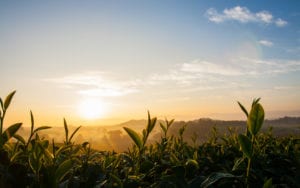I love Robin Wall Kimmerer’s book Braiding Sweetgrass: Indigenous Wisdom, Scientific Knowledge, and the Teaching of Plants (2013). There is much deep wisdom in this book, and in today’s blog I want to focus on the artificial separation we have been taught or have created in the way we view the world.
In her book, Kimmerer talks about the difference between studying biology in her doctorate program and learning about plants from her native culture. As a child, she was taught to observe how plants lived within the ecology around them, how types of plants often grew together, and how they contributed to the living system. Obviously, Kimmerer’s personal experiences helped her develop a deep appreciation of nature and biology. When she went to college and earned her Ph.D. in biology, she was introduced to seeing plants and their individual properties outside of relationships, focusing instead on plants in isolation from not only other plants but the soil and overall ecosystem as well. This separation caused her to reflect on the ways these different world views – traditional education that focuses on the individual plant, and the indigenous world view that focuses on the integration of the plant and its relationship within its environment – shaped the study and the questions she brought to her research.
As a result of Robin Kimmerer’s framing, I have been reflecting on other artificial separations that are present in our world and often go unquestioned. Although the list could go on infinitely, here are a couple of primary areas that came to mind first:
Thoughts and Feelings
We sometimes call these “the head and the heart” as though the two are entirely separate. But how can we think these two critical components of human nature aren’t connected? Neuroscience tells us that all thoughts pass through the amygdala, the emotional memory chip in our brain. Therefore all thinking must be connected to our emotions. Furthermore, this connection helps us make choices and develop preferences. What would happen if we saw thinking and feelings as an integrated concept instead of seeing the artificial separation of these activities. Would we value emotions in the same way we value our thinking in organizations?
Abundance and Scarcity
Most often, we see abundance and scarcity as two ends of a continuum. But when we make that assumption abundance becomes a zero-sum game. We either have an abundance – or we don’t. The same is true of scarcity. The book Scarcity: Why Having Too Little Means So Much (2013) helps us see that you can experience abundance and scarcity at the same time. Usually, we see abundance in terms of money. If you have money then you must have abundance. But what the two economist authors of Scarcity point out i that not having enough can come in a variety of formats. A scarcity of time, reflection, love, spirit, or connection, for example, can run alongside an abundance of money. These experiences are therefore not mutually exclusive. We can experience abundance and scarcity at the same time.
What is on your list?
Systems thinking would say that the more we optimize the part, the less we optimize the whole. This would suggest that if we want to serve the whole system – your organization, your community, or the entire world – we need to start naming and reflecting on the artificial separations we’ve been taught to see in our world.
I believe that change starts with each of us. Doing our work to see integration where we used to see separation is a good place to start.







Thanks for sharing Kathleen. Your article reminded me of a game I often uses as a way to help groups discover their unconscious bias in artificial separations. When people are being group/regroup based on preferences, behaviours or even mundane habits etc, their emotional responses often revealed why/how they are different to the others..sometime even to the extend of good/bad, right/wrong, normal/abnormal etc.
It has been a joy reading your work!
Thank you. This is powerful.
Thanks Kathleen! Loved reading your thoughts on this and it made me reflect about these issues in my life. I guess it’s a good exercise to try and find an equilibrium even though it could seem difficult at first, it something worth a try.